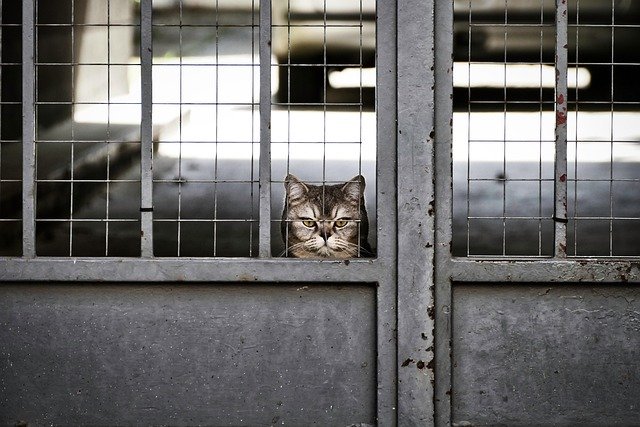Creating Stimulating Home Enrichment for Indoor Pets
Indoor pets benefit from thoughtfully designed enrichment that supports physical health, mental stimulation, and strong bonds with caregivers. This article outlines practical, evidence-informed approaches to nutrition, grooming, behavior, training, and environmental enrichment, with attention to special needs like seniorcare, dental and vaccination maintenance, and sustainable choices for everyday care.

Nutrition and feeding routines
Balanced nutrition underpins enrichment: predictable meals, appropriate portioning, and feeding puzzles can support both health and mental engagement. For cats and dogs, rotate textures and flavors within a consistent dietary framework to prevent digestive upset while offering novelty. Consider portion-controlled puzzle feeders or slow feeders to extend mealtime and encourage natural foraging behaviors. For small mammals or birds, scatter-feeding or hiding treats in safe foraging boxes encourages activity. Always align diet changes with veterinary guidance, particularly for pets with dental issues, allergies, or age-related needs.
Grooming and comfort practices
Grooming can be enriched to reduce stress and promote bonding. Short, regular sessions that combine brushing, nail care, and gentle handling teach animals to accept routine healthcare. Use positive reinforcement—treats or praise—for cooperative behavior during grooming. Create a calm grooming station with non-slip surfaces and good lighting, and rotate sensory items like different brush types or cloths to prevent monotony. For long-haired pets, enrichment also includes environmental changes such as raised platforms to reduce matting and play surfaces that keep fur cleaner between professional grooming appointments.
Behavior and mental stimulation
Identifying species-appropriate behaviors helps shape indoor enrichment. Cats need vertical spaces and hiding spots; dogs often benefit from scent games and problem-solving toys. Offer rotation of toys to maintain novelty and hide rewards in cardboard boxes, under towels, or inside puzzle toys. Observe play styles and tailor activities—some pets prefer solo toys, others need interactive play. Address unwanted behaviors by increasing structured enrichment and training rather than relying solely on punishment. For adopted or rescued animals, gradual desensitization and predictable routines can ease transitions and reduce stress.
Enrichment strategies at home
Design spaces that encourage exploration: window perches, climbing shelves, tunnels, and safe chew- or peck-proof areas for birds and rodents. Use household items—paper bags, boxes, and rolled towels—to create low-cost enrichment aligned with sustainability goals. Integrate wearable monitoring where appropriate; activity trackers for dogs and some cats can help owners assess when more stimulation is needed. When planning enrichment for travel or temporary housing, bring familiar items and maintain feeding and exercise schedules to reduce anxiety. Think modular: switch elements seasonally to keep environments interesting without excess consumption.
Training, socialization, and adoption considerations
Training is both enrichment and a foundation for good behavior. Short, consistent training sessions strengthen cognitive skills and the human-animal bond. Use positive reinforcement and break tasks into small steps for better retention. For newly adopted or rescued pets, prioritize settling in and gradual socialization—exposure to new people, pets, and environments should be paced and paired with rewards. Travel training and acclimation to carriers or crates can reduce stress for veterinary visits and relocation. Microchipping and proper identification should be part of the adoption checklist to support long-term safety.
This article is for informational purposes only and should not be considered medical advice. Please consult a qualified healthcare professional for personalized guidance and treatment.
Seniorcare, vaccination, dental and practical health
Enrichment for senior pets emphasizes low-impact activity, cognitive games, and accessible environmental modifications. Soft bedding, ramps to favorite spots, and scent-based puzzles that don’t demand heavy mobility help maintain engagement. Regular dental checks and age-appropriate vaccination schedules matter for overall wellbeing—oral pain can reduce appetite and interaction, so dental care is a component of enrichment. Coordinate with local services such as veterinarians and shelters for seniorcare resources, and consider rescue or shelter staff guidance for transition planning. Responsible vaccination, dental maintenance, and microchipping are practical health measures that support a pet’s ability to engage safely with enrichment.
Conclusion
Creating stimulating home enrichment for indoor pets combines consistent routines, species-appropriate activities, and thoughtful health care. By integrating nutrition, grooming, behavior management, training, and sustainable home modifications, caregivers can support physical and mental wellbeing across life stages. Observing individual preferences and adjusting strategies over time helps ensure that enrichment remains meaningful and manageable for both pets and owners.





